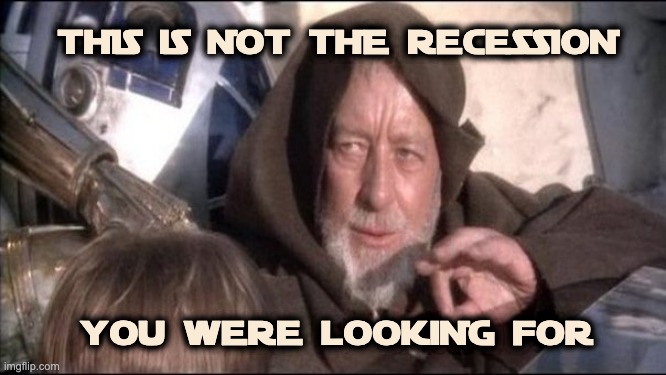definition of recession
The new GDP number will be released later this week. Traditionally a recession is defined as a fall in GDP in two successive quarters. The US economy shrank in the first quarter of 2022. This means that if the second quarter number shows a second straight economic contraction, the United States will be in a recession—maybe. It seems that Team Biden is looking to change the definition of recession.
Perhaps to reverse the slide toward a red wave in the midterms, the President and his team are signaling they are trying to change the recession definition. This way, they can tell the voter all is well in the economy:
“The technical definition [of a recession] is not two negative quarters,” insisted Biden economist Brian Deese on Monday, citing the National Bureau of Economic Research’s broader characterization: “a significant decline in economic activity that is spread across the economy and that lasts more than a few months.” A White House blog post made a similar argument.
Biden uses the large number of people returning to work post-covid is why two-quarters of contraction will not be called a recession.
The president himself said, “We’re not going to be in a recession, in my view,” speaking to reporters Monday. He commented after a virtual meeting with corporate leaders to discuss a continuing shortage of semiconductors.
“My hope is we go from this rapid growth to steady growth,” Biden said while noting that the US unemployment rate of 3.6% is historically low.
Even the White House Council of Economic Advisers is fudging the definition of a recession.”
What is a recession? While some maintain that two consecutive quarters of falling real GDP constitute a recession, that is neither the official definition nor the way economists evaluate the state of the business cycle. Instead, both official determinations of recessions and economists’ assessment of economic activity are based on a holistic look at the data—including the labor market, consumer and business spending, industrial production, and incomes. Based on these data, it is unlikely that the decline in GDP in the first quarter of this year—even if followed by another GDP decline in the second quarter—indicates a recession.
The White House is so very busy dealing with other crises to spend time redefining a recession. Therefore being a good American, I decided to help with a few ideas that fit their idea of getting Americans to forget they can’t afford to put gas in their tank and/or put food on their table:
- A recession is when the economy is so bad that President Biden reopens the Keystone pipeline and allows drilling at ANWR.
- Kamala Harris goes to the southern border two quarters in a row.
- Six straight months where Iran’s Supreme Leader is not discovered sleeping with a goat.
- Things are so bad that Paul Pelosi passes up two opportunities for insider trading.
- Two negative quarters PLUS a cow and a goat run to the top of the Empire State Bldg,
- MSNBC goes two weeks without declaring the end of democracy, and/or the GOP is evil.
- Two consecutive quarters that Putin does not take off his shirt and ride a horse.
- Former President Trump, Former presidential Candidate Hillary Clinton, and former Georgia Governor Candidate Stacy Abrams all stopped complaining that their last election was stolen from them.
- Biden still keeps an open border, but he puts up a toll booth to replace some of the overspending by the Democratic Party-controlled Congress.
- The NY Jets win two Super Bowls in a row (if they pick this one, there won’t be a recession under a Democratic President for at least a century).
- Adam Schiff passes up two opportunities to leak fake anti-Republican information.
You may believe the above suggestions are crazy. However, these suggestions are not crazier than redefining a recession to convince Americans that Biden’s declining economy is not a recession.
definition of recession






